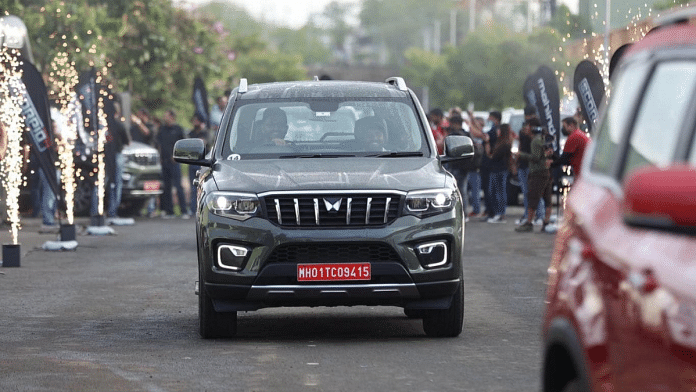I have spent much of the past week traversing through northern India in a Mahindra Scorpio-N. As I have said in my first impressions of this vehicle earlier, this third-generation homegrown sports utility vehicle has improved a lot over the previous two generations. After driving over 1,600 km and also spending over 24 hours behind the driver’s seat, I have a couple of more things to point out. The new Indian expressways are, for the large part, fantastic, though driver education needs to improve drastically. The Scorpio-N is a very comfortable and spacious long-distance cruiser, and despite the third row not folding down completely, it accommodated three large suitcases and other assorted bags.
If I have one complaint, it is that the heavy Scorpio-N is thirstier than its rivals — we achieved a fuel economy of just 13.2 km per litre, which some friends of mine, who had also munched miles with this vehicle, called “respectable”.
But last Monday, it emerged that the Scorpio-N had scored a five-star adult safety rating in the latest tests conducted by the Global New Car Assessment Programme (GNCAP) and a three-star rating for children in child restraint systems (child car seats).
While Mahindra has been taking safety extremely seriously in the past few years, this achievement has to be celebrated for a couple of reasons. First and foremost, the Scorpio-N is a ‘body-on-frame’ vehicle — my first drive impressions of the new monocoque Toyota Innova Hycross show the differences between the two types. ‘Body-on-frame’ vehicles, though heavy, don’t tend to do all that well in crash tests, so this was impressive. Also, this round of GNCAP tests follows a new protocol, one that also involves a side-impact test. So, kudos to Mahindra for this result.
Also read: Innova Hycross improves on many fronts—great mileage, little body roll, handles corners well
Maruti should take note
There were also three Maruti Suzuki vehicles tested in this series. While the tests were not comparisons, the Ignis, S-Presso, and Swift did extremely poorly — the highest star rating any of these best-selling vehicles got was just one for adult occupant safety. But far from igniting a debate about the results, the tests themselves came under scrutiny. Experts questioned whether it was fair to subject cars developed a few years ago to new testing standards, unlike in the case of the Scorpio-N that was developed to crack the latest GNCAP crash test norms.
I spoke to Siddharth Patankar, editor-in-chief at Car&Bike, who has been closely associated with the GNCAP testing for several years, and his point was simply this: “If Maruti Suzuki can sell cars such as the new Baleno and Brezza that will clearly meet higher safety standards as well as sell the Ignis and Swift in Europe where they have received high scores in the European New Car Assessment Programme (Euro-NCAP) tests, why can’t they sell in India?”
Incidentally, the Maruti Swift in Europe has a three-star safety rating. But there, to achieve the top scores in safety, vehicles need to be equipped with Advanced Driver Assistance Systems (ADAS). Keep in mind one aspect of crash tests — it is always the base model of vehicles that are tested; while higher specs could have additional safety features, it doesn’t count in crash test scores.
However, Patankar did make another point: One about price. The Suzuki Swift, which has been a best-seller all across the world, has a starting showroom price of £15,499 in the United Kingdom, which, would amount to nearly Rs 16 lakh. The top-end Swift in India retails for just under RS 9 lakh.
“The same car, the same platform can have drastically different test results just on the basis of the steel used and the reinforcement of the side structure. Would buyers in India be willing to pay European prices for the Swift or even the Hyundai i10? I hope these test results make Maruti realise that it should do more to make its cars safer. With the Tata Punch that got a five-star rating (though with the older norms, which did not have side-impact tests) Tata Motors proved that cars can be affordable and safe,” he said.
Also read: India’s road infrastructure beginning to look impressive. But it’s a long way from world-class
Driver education remains a problem
No matter what the safety scores are, poor driver education remains a problem. At a recent ‘Safer Roads’ initiative by Mercedes-Benz Research and Development India, it was revealed that in 2021, over 15,000 people in the country died due to not wearing (or poorly wearing) seatbelts. That is 10 per cent of the 1,50,000 plus (official) road deaths in India, and I would hazard a guess that a fair number of those deaths could have been prevented.
Similarly, a large number of two-wheeler riders who died weren’t wearing helmets. And, of course, wrong-side driving, even on high-speed expressways, the deadly mix of traffic moving at wildly different speeds (from bullock carts to Lamborghinis) are easy fixes, though not for the car companies. We have built the roads, now it is time to educate commuters on how to use them.
That said, my assertion that driver education has to improve shouldn’t take the attention away from the responsibilities of automotive companies to improve safety scores. Cars and roads have to be made more and more idiot-proof. Yes, many drivers are idiots, but that does not warrant death or injury to yourself and others.
@kushanmitra is an automotive journalist based in New Delhi. Views are personal.
(Edited by Humra Laeeq)



